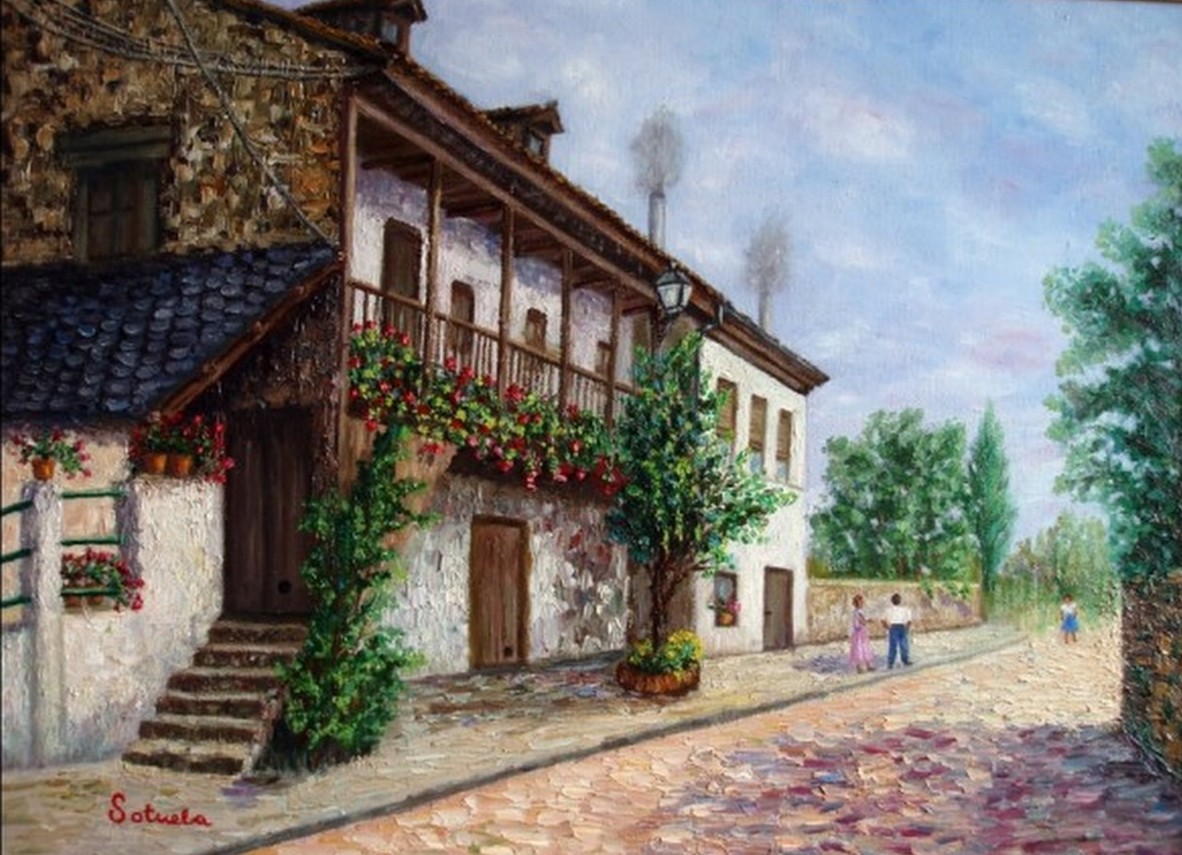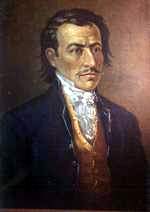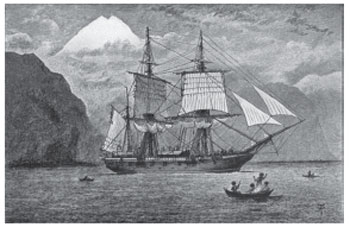Outcome.- La Revolución de Santander.
"The last day of my life will be the first in which Colombia won't have me looking after her independence, honor and liberty"
-Francisco de Paula Santander, President of Colombia.
After the war, and with Colombia for the moment secured, Santander realized that if he wanted to place Colombia as one of the Great Power, a complete change and re-organization of the state would be needed. Especially concerning matters were the excessive power and control the landowners and the church had over the young country. A change in the economy was also needed, as Colombia, just like the rest of Latin America, was adequate for an exploitation economy, not a production one. Colombia, thanks to its influence in Haiti and vast natural resources, had managed to produce tons of money thanks to the selling of sugar, coffee, cacao, tobacco and clothes, but the last along with cheap and low-quality steel were the only truly industrial products.
With a complete change of society and economy in mind, Santander started what came to be known as the Great Reforms, together with the help of Sucre, O’Leary and a Quitean Dama, Manuela Saenz. The Great Reforms started by the drafting of La Segunda Constitucion Nacional, and started a decades long plan for the total reformation of Colombian society and economy. Sucre promised to continue the reforms after Santander’s term was over and also to make sure their successor would do as well.
Santander is still considered one of the best presidents Colombia's ever had, and one of the best Colombians overall.
The Great Reforms were as follow:
1.- La Ley de la Reforma Agraria: Meant to free land for immigrants, reduce the power of the elites, increment productivity and encourage industry, the Law only managed to be barely approved thanks to a combination of specific circumstances, namely the popularity Santander enjoyed after the war and the interests of the small circle of Colombian industrialists, who wanted to rose in power, both political and economical. Another great factor for the Law was that it helped to stabilize Colombia, by shifting the wealth of the elites and thus making favorable the continuation of the union.
The reality of Colombia looked grim. Though the nation was mostly able to fed itself, the fact was that most of the lands where in the hands of the same elites of old. Miranda had managed to place all the land of Royalists and suspected royalists under de jure state control, but de facto they fell into the control of yet other landowners. The Church also held a disproportionate quantity of land, and that land was not used to its full potential. The three main classifications of the land were the “haciendas”, the lands of the church and the “baldios”, state owned but awarded to people for their services, generally underused and with terrible efficiency, it’s believed they represented about 75% of the national territory of Colombia.[1]
A typical Hacienda, heritage of the Colonial period.
In order to change the repartition of land, Santander created the Secretary for Agriculture and put strict rules in the ownership of land, managing to find several illegal haciendas and confiscating the land. He then started the true main part of the Law, by initiating a long and slow, but concrete and effective process aimed at the organization and improvement of efficiency of the haciendas, together with crop rotation and encouragement of new crops. The process is considered to have ended around 1873, the year of the Fourth National Constitution and almost 50 years after the war.
The key of the process was, however, that Santander avoided above all messing with the big elites, the ones that decide the future of the nation, securing thus their support and using it to control minor elites and landowner without threatening either Colombia or his government. Of consideration is what has come to be known as “The Switching”. The Secretary would often buy certain extensions of poor land for cheap prices and give good, productive baldios in exchange, but those baldios would be in other state. For example, a Cundinamarcan landlord would sell his poor, unproductive land there and obtain land in Venezuela. Then either they would decide to sell that new land for a neat profit (selling it to other big landowners was banned, but selling it back to the government was legal) or decide to conserve it, thus making the continuation of the Republic beneficial to them. Some of the smarter landowners would realize this and exploit it in their favor, but since most of the time it represented a neat gain (either getting rid of bad land and obtaining great wealth in exchange, or getting great land for a cheap price) most went along with it.
This may seem to be just a loss of money for the state, but the Secretary was able to recuperate the money partially or totally by then dividing the old land parcels and selling them. The main objective of the Law was not producing a profit anyway, but rather re-organizing the land of Colombia. Production incremented, cheap land was freed for immigrants and other people, with most of the former laborers of the farms generally heading to the coasts and starting to work in the weak and young industries there. We should note that this was only possible because Colombia had a money surplus thanks to not needing to maintain an enormous army or navy. As it has been already stated, the process was slow and difficult, but it is now considered a great success.
Piastra, the Colombian currency.
2.- Laws about Immigration.- Realizing he couldn’t really compete for immigrants with the United States, and that Colombia had massive handicaps discouraging them from settling there, Santander decided to try other approach. Focusing in cities and intellectuals from Spain, Portugal, France, Italy, Eastern Europe and cheap labor from Asia, the new laws, considered a continuation of Miranda’s Hispanic Laws, greatly encouraged and facilitated immigration for those people. Citizenship could be get just by being Catholic or speaking Spanish (though right to vote needed the last condition, but not the first one). Similarities between the languages, making learning Spanish much easier, and the extension of the Catholic faith in those European populations targeted, together with the friendly environment Colombia offered for them in heavily contrast with the governments there which were divided between absolutism and liberalism. Though some immigration started thanks to those laws, it was less than to La Plata, never mind the United States. However, the big waves of immigration would only start later after several political developments there.
As for the Arab World, many intellectuals decided to leave it, preferring Colombia, which, even though showing a clear favoritism of White Catholics, was still less racist than the US. The main factor was that Colombia was hungry for skilled labor, and was willing to ignore the faith of someone (The Constitution proclaiming freedom of worship) and accept a very basic level of Spanish if they were able to provide some good for the state. Thus Colombia became known for almost securing work to any skilled labor that arrived there, often handing the lands freed from the Agrarian Reform to them as a payment.
Colombia would, some would say arrogantly, call itself the "Land of Liberty and Union"
Finally, and regarding Asia, some Asian intellectuals left for the same reason, installing mostly in the Ecuador region. The most important wave of immigration, from an unstable China and an India recently conquered, was formed by poor waves of farmers, who hoped to achieve a better life but where, unfortunately, often used as cheap labor for the construction of infrastructure and the newly funded coffee, cacao, banana, sugar, tobacco industries. Still, they often found life better under the rule of Colombia, as there were no racial limits for citizenship, with knowledge of Spanish being the only thing required. Admittedly, being Catholic helped a lot, but it was possible to retain the original faith. Not that many Indians, who were generally pariahs “untouchables” of the caste system wanted to, deciding to believe in a God that loved everyone equality instead. Another thing of note is that this wave would continue for a long time, and while in the US there were concerns about them “stealing jobs from honest white men and taking naïve white girls”, in a Colombia product of “mestizaje” nobody cared unless the women were white criollas, with marriage with Mestizos or Natives being ignored. A similar situation took place in the Caribbean, with thousands moving to the coasts or Hispaniola to work there.
Most importantly for immigration was however the propaganda that Colombia managed to spread through Asia and Europe. This was mostly done with the help of Daniel O’Leary and the British Prime Minister, who was happy of the Colombian success against Peru (because it was thus considered a French failure) and currently angry with the Americans for the Florida fiasco. Immigration to Colombia was still minimal in comparison with the US, but Santander had achieved success in that skilled immigrants, who would be the base for the State, still went there.
Chinese immigrants in Guayaquil.
3.- La Maldita Alianza Sagrada.- The Catholic Church held an enormous power over Colombia, and all of Latin America in general. Even when the inquisition was abolished and Spain of all places was starting to pick some secular ideas thanks to influence from the Napoleonic wing of France, the Church held vast tracks of Land and have an incredible power over the people. National Identity was weak and new, and many Indigenas still didn’t identify as Colombians. The Clergy was still identified as one of the three powers the state needed, together with the Armed Forces (Land unnecessary thanks to natural frontiers and the defeat of Peru, Naval relegated to defense only) and the (currently happy) Big Landlords. The great mistake of Latin America, opined Santander, was that the Church controlled the State, not the other way around.
The “Unholy Sacred Alliance” (Or “Goddammed Holy Alliance”) was created to limit the power of the Church. In exchange of not taxing the enormous extensions of land the church held, and even giving them some more, it would have to give education (in accordance with the Decree of National Education), help building houses and infrastructure and not interfere in the economy. The reasoning behind this was that while little towns in the interior could lack absolutely everything, they would always be a church able to take the entire village inside. Thus using them to educate the people saved a lot of resources and implemented better the ones Colombia already had, as the classes, disguised as “Catequesis” and taught by literate preachers, were able to teach Spanish, how to read and write and basic knowledge in math and science.
The Colonial Legacy left some gorgeus churches in Colombia. Most of the ones used for education were simple and litte, however.
The Alliance was only for the little towns in the interior though, which leads us to…
4.-The “libros, periodico y medicina” approach: The foundations for widespread education were set by Miranda’s Decreto de Educacion General, but it was during the Great Reforms that they reached their apex. By using the church in the little towns, Santander and the Ministerio de Educacion, together with the Quitean Dama Manuela Saenz were able to focus in the cities, where the immigration and economical developments were also taking place. The National Universities, funded already by Miranda, were given a major budget and Santander even “imported” professors from Europe, often giving them lands too. The more important developments in education were with the foundation of new schools and, thanks to the economic bonus obtained by careful management of resources, many children were able to go and learn. True to be told, the colleges were mostly reserved for the upper classes, but the level of education improved significantly. Also, with the help of Saenz, the first Girl Schools and “Colegios para Señoritas” were funded. Few women got education aside from learning to write and read, if even that, but those colleges were concentrated in the three major cities plus one in Hispaniola, but it was an important advance.
Eugenio Espejo, procer of the Independence.
As for the “news” part, the “Primicias de la Cultura de Quito” de Eugenio Espejo was revived, along with the foundation of “El Colombiano”(by O’Leary)[3], “El Patriota” (by Sucre and Nariño) and even “El Venezolado”, by Bolivar, later force changed into “El Diario del Pueblo”. Though the very blatant pro-Colombia nationalist propaganda is now looked with contempt, it undoubtedly played an important role in the formation of a national identity and the spread of literacy and the Spanish language.
Finally, the “medicina” approach was aimed at incrementing the Colombian population. Colombia was only rivaled by Brazil in population in South America, but both Mexico and the US had far more manpower. Even when Colombia had already a very good birth rate and had already gone through two baby booms after each war, along with modest but good immigration, the population was relatively low and the death rates way to high. By again using churches as improvised hospitals, importing doctors and investing heavily in health in the cities, death rates managed to be lowered, and in fact, Colombia achieved the second lowest only after the US.
Rumor was that she had a relation with Bolivar, but left him after his coup attempt.[2]
Importantly, and perhaps somewhat bizarrely, the Colombians also started to see Indigena medicine and the ancestral methods of healing as viable, and that interested several
scientifics who, with heavy support and funding by the state, started to examine Colombian wildlife and plants, along with native populations of the jungles and mountains, all in hopes of finding a cure for the illnesses that had plagued South America and in some cases the world.
In the same vein as those Scientifics, but not in the same area of study, Charles Darwin arrived in Colombia around 1834. He planned to go earlier, but the war had postponed those plans. He would go on to visit the Colombian held Galapagos Islands, until then used as a penal colony. After several observations he could formulate his Evolution Theory, and, not wanting to see the islands destroyed, asked the government to protect them. In his honor a port was founded and named “Port Darwin” and a delegation of the Navy sent to protect it from pirates.
All of the Great Reforms were part of a slow and very hard process, which is not considered to have been completed until at 1890, more than fifty years after the first reforms started. Now considered revolutionary, the Reforms became the first step for Colombia into the limelight of the world.
_________________________________
[1]From
here.
[2]OTL she was Bolivar's significant other, even being called "La Libertadora del Libertador". Why did I make her break up with Bolivar here? Because I don't like Bolivar.
[3]It did exist. It was pro-Bolivar, though.
AN: Sorry for the delay. I've been busy, and also I had to rewrote this chapter and make some intensive research into Colombia, and that took some time.








